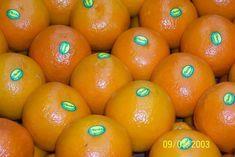
Agrexco’s strong identity in supermarket programmes has been the result of its commitment to working to improve technical standards to meet with EurepGAP, Tesco’s Nature’s Choice and BRC, says UK citrus sales manager, Rob Cullum.
“Equally important, success with the consumer has been achieved by developing citrus with the taste and quality demanded in the UK, in particular grapefruit and easy peelers,” he says.
“The UK is an important market for us and we have worked hard with our growers and customers to establish exactly what is wanted - fruit with a high sugar level that is both juicy and has great taste. A good example is our white grapefruit which we supply direct from the trees, rather than from storage, which allows the natural sugars to fully develop.”
Israel’s citrus fruit has had an exceptional year, benefiting from the lack of supply from Florida and now Spain. Agrexco’s citrus volumes sent to the UK have increased by 100 per cent, popular with both retail and wholesale customers demanding good quality and plentiful fruit.
During the summer months outside of the Israeli season, Agrexco fills its citrus campaign with fruit from Peru, to ensure almost a year-round supply. Agrexco works with Peruvian grower La Calera and markets its fruit exclusively in the UK under the Alesia brand. The fruit is grown in the Peruvian desert, with the Pacific Ocean on one side and the Andes Mountains on the other side of the groves. The citrus plantations are in Chincha, two hours south of Lima, with additional groves in the north and south of Peru, and average grove sizes are fast approaching 1,000 hectares. Cullum says: “The business is ever expanding - the strong relationship between Israel and Peru is a result of both countries sharing their acquired knowledge and expertise. Israeli varieties are being planted in Peru and Israeli citrus experts are involved with the set up. In turn the Peruvians are helping the Israelis with their knowledge on satsumas.”
Citrus varieties include satsuma, minneola, clementine, Nova, Pixie, Fortuna and Delight and Agrexco is looking to the future with the possibility of growing Or and navels. Cullum says the high light levels and consistent temperatures, good water supply which travels from the Andes through the jungle and mountains to the desert, all contribute to cultivating citrus of excellent quality.
“Consumer response has been extremely encouraging. We believe Peru will become a major participant in the citrus market. Our packhouse in Peru has been approved by all of the multiples and we will be focusing more fruit towards the UK as we believe that it is the best citrus available from the southern hemisphere, “ he says.
With the expansion and growth of the citrus sector for Agrexco, the UK citrus desk has a new team member, Ian Crispin, who will be working alongside the existing team on all accounts. Agrexco’s citrus portfolio includes easy peeler varieties such as satsumas, minneolas and suntinas. Shipments of Mor, Or and Mandor usually start in mid-February with supply lasting for five to six weeks. “Demand is expected to be high across the range, especially for Or. There is a larger crop of Mor, Or and Mandor, although this season, sizes may be smaller across these lines, than in previous seasons,” says Cullum.
“The orange season usually starts with Shamouti and we are looking forward to a good yield despite the lack of abundance of larger sizes. Valencia then follows in April giving oranges a long coverage from February until mid-June. We have also had good success from Sweetie and pomelo and volumes are steadily increasing.”
Business has become exceptionally busy at the start of 2005, says Cullum, given the unusually low temperatures in Spain and unknown damage to the Spanish crops. He says: “We have been experiencing an influx of new customer enquiries and luckily we are in a good position to meet the demands of the UK market. February is the peak of our grapefruit season, and this year, after a somewhat furious start for whites, has now settled down to a similar pace to previous years. We knew that demand for red would be high after the hurricanes experienced in Florida and as this shows no sign of slowing down, prices are still high.”



